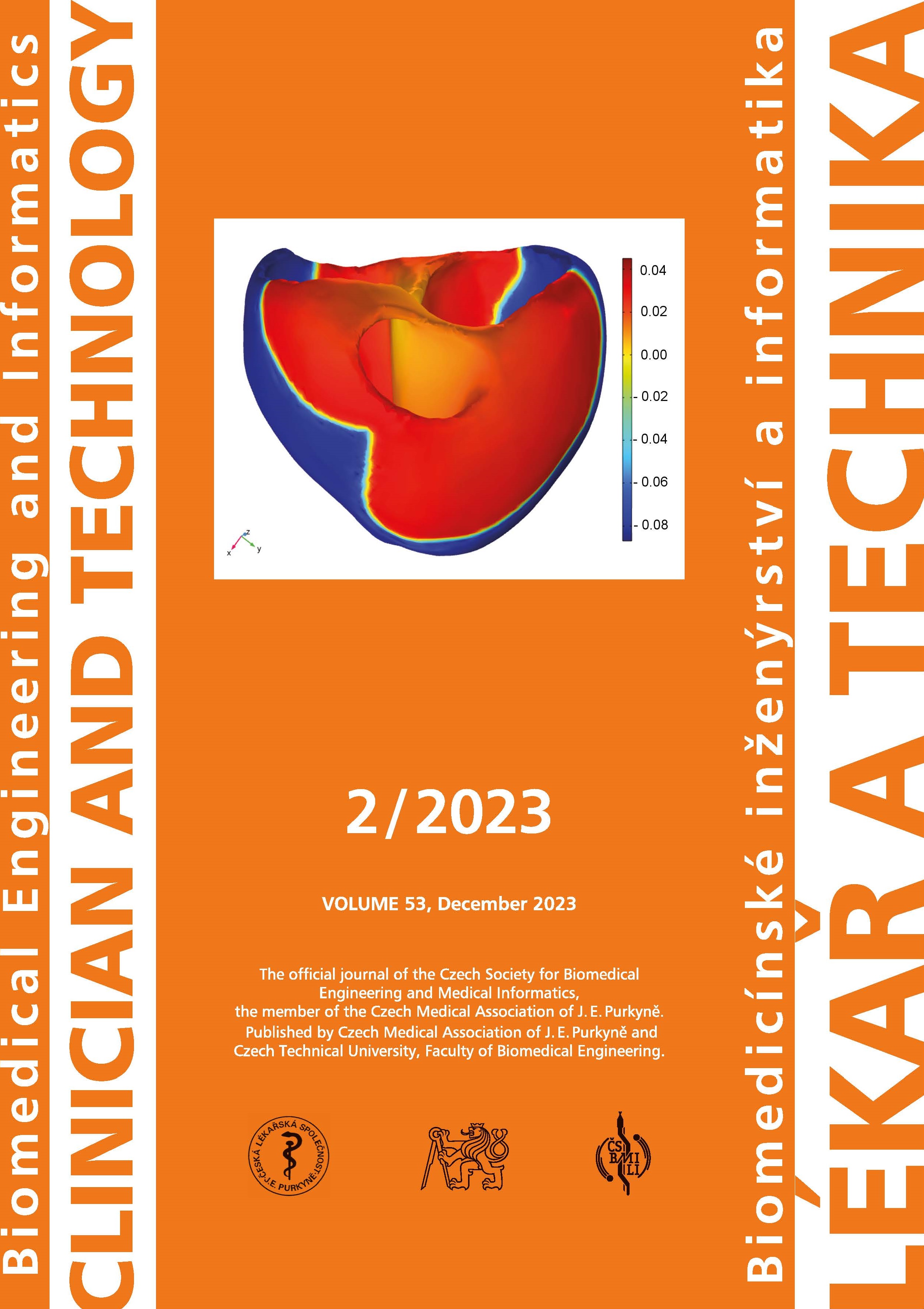ANALYSIS OF RELATIONSHIPS BETWEEN HETEROGENEOUS RADIOMIC FEATURES OF THROMBUS IN ACUTE ISCHEMIC STROKE
DOI:
https://doi.org/10.14311/CTJ.2023.2.01Abstract
Ischemic stroke is one of the most widely recognised cerebral pathologies. Its diagnosis starts with computed tomography (CT). However, a comprehensive understanding of the characteristics of the thrombus is necessary to establish an appropriate and less hazardous treatment. This study focusses on the analysis of thrombus heterogeneity in CT images of patients with acute ischemic stroke (AIS). The radiomic features of the thrombus were used to obtain the voxel distribution in the new feature space. It was then reduced using Principal Component Analysis (PCA) and subjected to visualisation techniques such as t-distributed Stochastic Neighbour Embedding (tSNE) and Uniform Manifold Approximation and Projection for Dimension Reduction (UMAP). By evaluating the morphological structure of the clusters created within patients, it was possible to determine the number of thrombus components. This information could help the physician predict the burden on the patient during thrombectomy, such as the number of attempts required for recanalization.
Downloads
Published
Issue
Section
License
Copyright (c) 2024 Petra Nemčeková, Adam Škrváň, Henk Marquering, Jiří Chmelík, Roman Jakubíček

This work is licensed under a Creative Commons Attribution 4.0 International License.
Authors who publish with this journal agree to the following terms:
- Authors retain copyright and grant the journal right of the first publication with the work simultaneously licensed under a Creative Commons Attribution License (https://creativecommons.org/licenses/by/4.0/) that allows others to share the work with an acknowledgment of the work's authorship and initial publication in CTJ.
- Authors are able to enter into separate, additional contractual arrangements for the non-exclusive distribution of the journal’s published version of the work (e.g., post it to an institutional repository or publish it in a book), with an acknowledgment of its initial publication in this journal.
- Authors are permitted and encouraged to post their work online (e.g., in institutional repositories or on their website or ResearchGate) prior to and during the submission process, as it can lead to productive exchanges.
CTJ requires that all of the content of the manuscript has been created by its respective authors or that permission to use a copyrighted material has been obtained by the authors before submitting the manuscript to CTJ. CTJ requires that authors have not used any copyrighted material illegally, as for example a picture from another journal or book, a photo, etc. It is the author’s responsibility to use only materials not violating the copyright law. When in doubt, CTJ may ask the authors to supply the pertinent permission or agreement about the use of a copyrighted material.
The opinions expressed in CTJ articles are those of authors and do not necessarily reflect the views of the publishers or the Czech Society for Biomedical Engineering and Medical Informatics.


